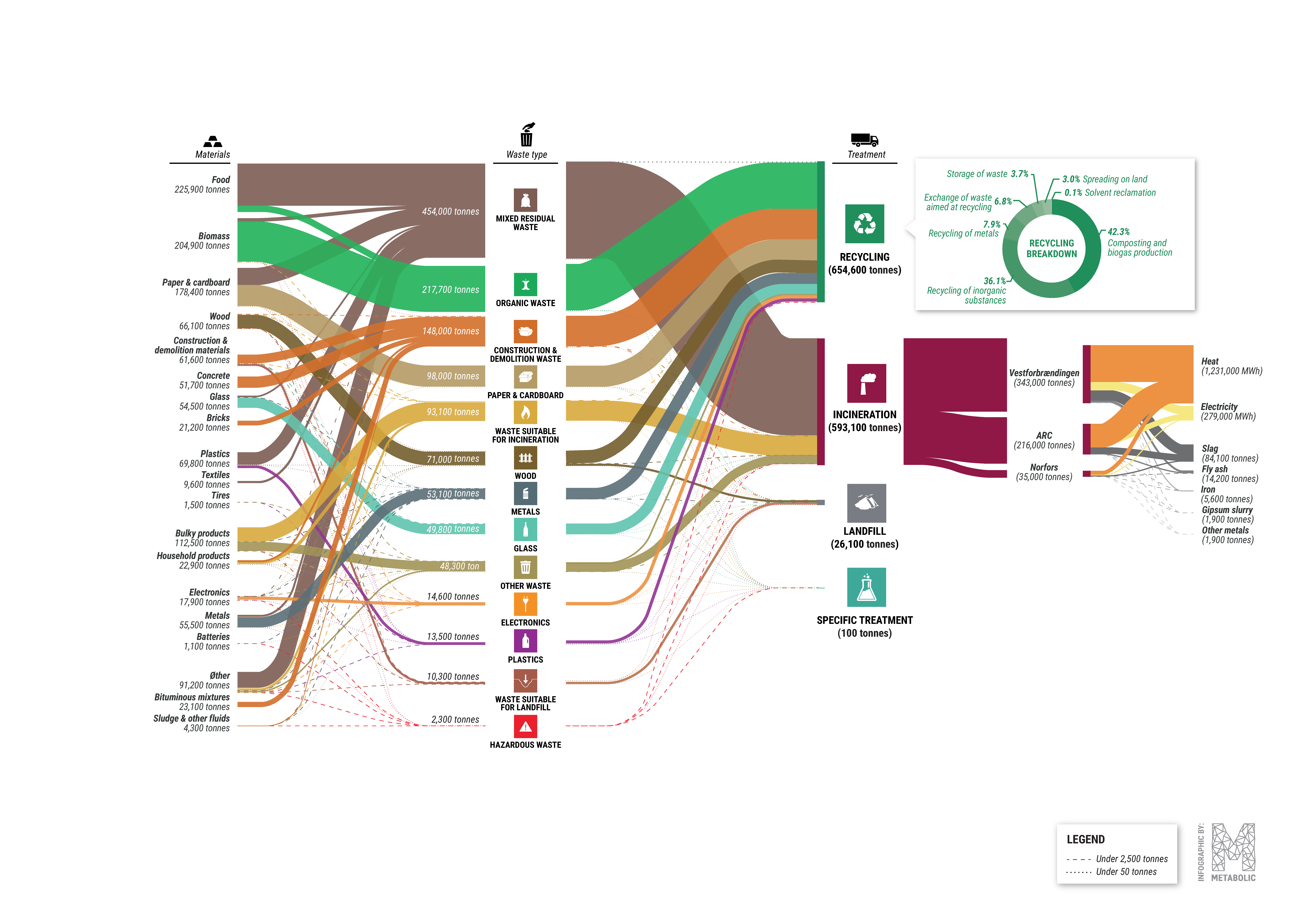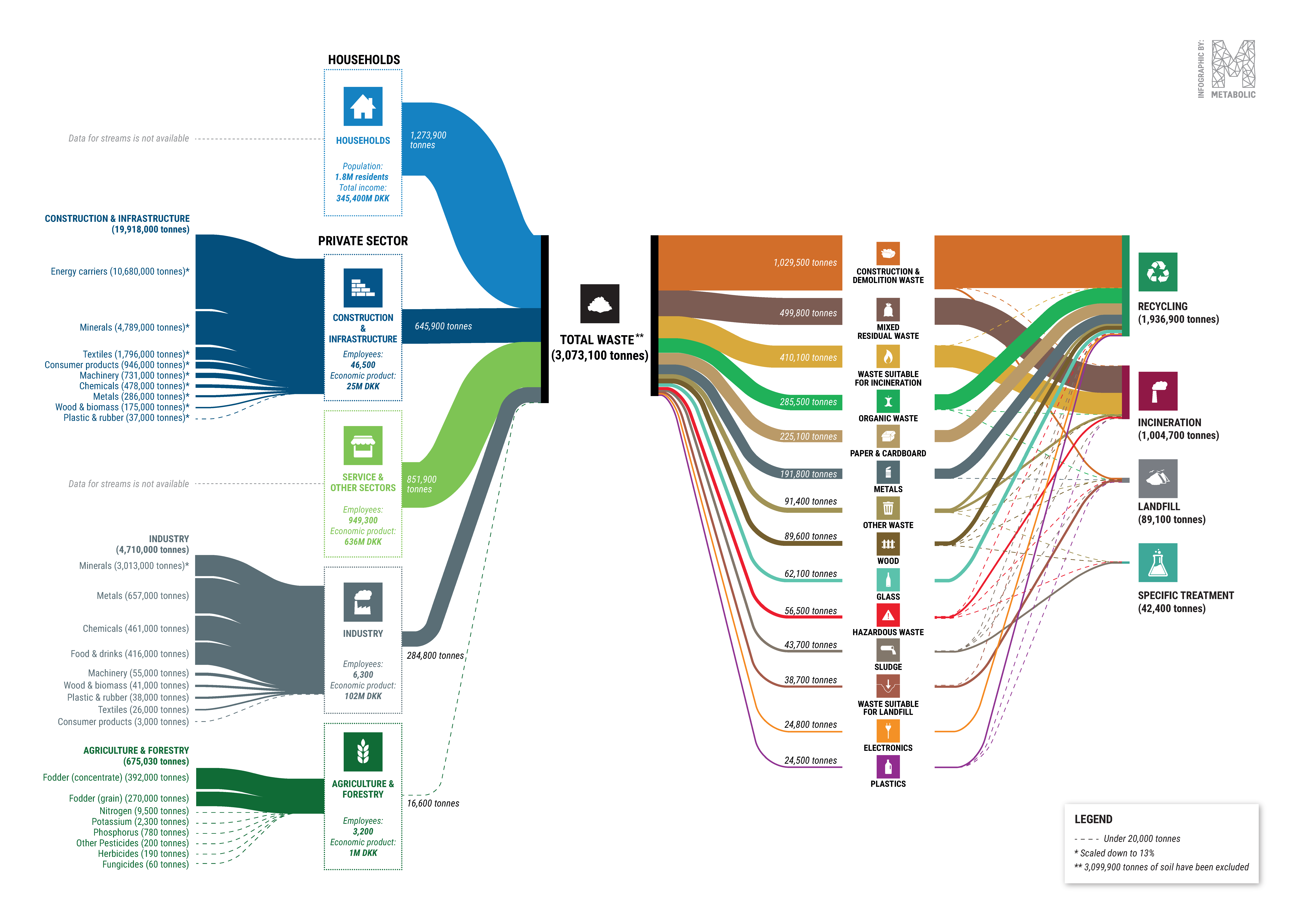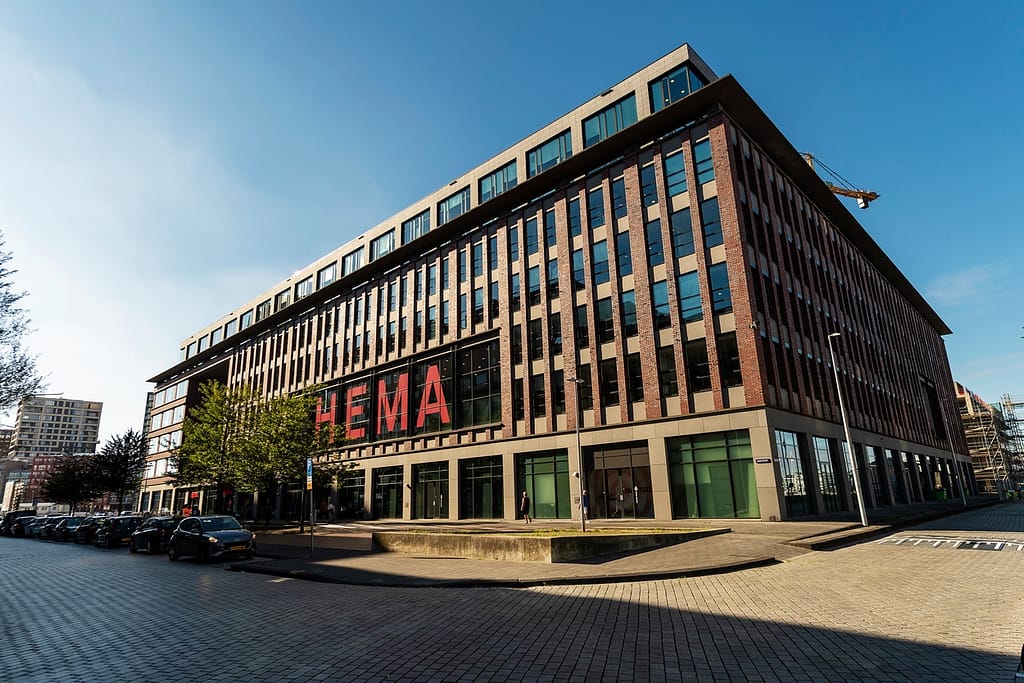A waste analysis of the Capital Region of Denmark
Exploring circular solutions in the Danish waste system
Metabolic collaborated with the Capital Region of Denmark to undertake a material flow and environmental analysis of the region’s waste system, and to identify impact hotspots and circular opportunities.
- Client: Capital Region of Denmark
- Partners: Waste and Resource Network Denmark (DAKOFA) and The Danish Board of Technology Foundation (Teknologirådet)
- Date: February 2020
Reducing waste in the Capital Region
The Capital Region of Denmark is committed to becoming a fossil-free and circular region by 2050. Among other things, this entails achieving an 80% recycling rate for the region’s waste by 2035, and growing green business activities 8% by 2025. New forms of cooperation and dialogues between stakeholders are necessary to reach these goals.
Through a three-year public-private partnership, the region and its partners aim to pave the way for greater collaboration between the waste sector and the business community. Metabolic’s material flow and environment analysis will steer the project for its remaining two years.
Highlighting where to start the transition
We undertook a material flow analysis (MFA) and environmental assessment of the region’s waste streams. Based on this analysis as well as dialogue with the stakeholders, we identified five waste hotspots and four systemic, circular hotspots. Waste hotspots refer to materials that could be utilized more effectively. The circular hotspots point toward underlying systemic or structural transition barriers.
Pathways to systemic improvements of the waste system
Together with the project management of ‘Affald og Ressourcer på Tværs’ (Waste and Resources Across) and its partners, we provided a broad overview of the waste system in the Capital Region and used various analytical angles to point to waste streams and systemic challenges that deserve more attention in the region’s transition to a circular economy. While solutions within the waste system are mostly technically focused and typically apply to specific waste types, there is a clear need to identify more systemic solutions further up the value chain.
For the next two years, the project partners will continue to examine a selection of the identified hotspots and explore new forms of collaboration. The upcoming initiatives will span the selected materials value chains to establish systemic and well-founded solutions that can support the Capital Region’s goal of driving the transition to a circular economy.










“The Capital Region of Denmark and the project partners have pioneered a more systemic and inclusive way of carrying out waste analysis in Denmark. The project will form the basis for further work towards a transformation of the waste system in the Capital Region.”
Thomas Thorin, Project Manager
Director of Sustainable Cities & Regions
ANY QUESTIONS?
For more information about this project, please get in touch.






